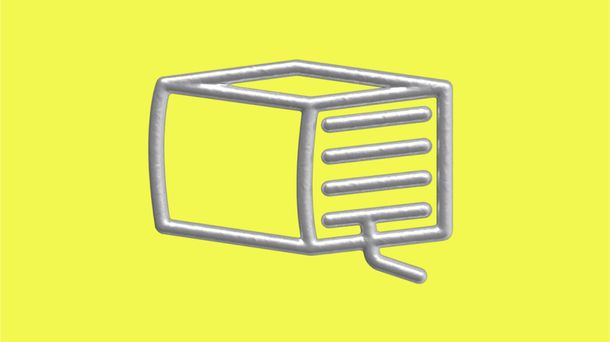If you want to create the perfect brand identity, there’s one crucial step that you just can’t skip: pre-project study! Sure, an interview with the client is important, but it’s just the beginning. At ESH gruppa, we dive deep into their business, industry, and goals to make sure we have all the info we need to seamlessly integrate future design into the client’s framework. That way, our brand identities don’t just look pretty — they actually work for our clients. So, if you too want to know how to research your way to a stronger brand presence, read on.
What exactly is a pre-project study?
The pre-project study includes data collection and analysis to build a knowledge base about the project, the world, the business, and the visual environment. This knowledge base makes it possible to take a more practical and effective approach to brand identity.
The study is an independent step in project work. High-quality research is the end product of this step. The final result is a multi-page presentation that focuses on a specific topic.
What is included in a pre-project study?
The study’s contents are determined on a project-by-project basis. A conceptual arc is formed based on the input, which influences the choice of research methods.
How does a pre-project study work?
When a client asks us to design a new identity for them, we let them know right away that pre-project work is required. The scope of the request determines the amount of work; the more challenging the task and precise the result, the more thorough the pre-project study will be.
After analyzing the task, we understand if particular case requires research. Here are the most common scenarios:
- Insufficient market knowledge — the company lacks knowledge of the market shifts.
- New market — the company enters a previously unexplored market.
- A highly saturated field — the company needs a well-thought-out strategy to stand out.
Whatever the scenario, our research ensures we’re armed with all the information we need to make informed decisions.
What can you learn from a pre-project study?
1. Market Research
Market research is a study of customer-business interaction indicators. Typically, this would be our clients’ strongest area of expertise. However, at times, there’s a need to update this knowledge.
In 2018, we worked with the architectural bureau Form, who needed a new website. After discussing the task at hand, we felt there was a need to update market knowledge.
We searched open sources for statistical information and studies that might be helpful, and researched current market trends. Following this work, we were able to test hypotheses for the company’s future brand identity and strategic development.
We discovered that architectural consulting is on the rise and knew that expertise, experience, and personality had to be emphasized in branding and communication design. This has become the foundation of the Form’s successful work strategy, and they are now offering consulting services that weren’t previously available.
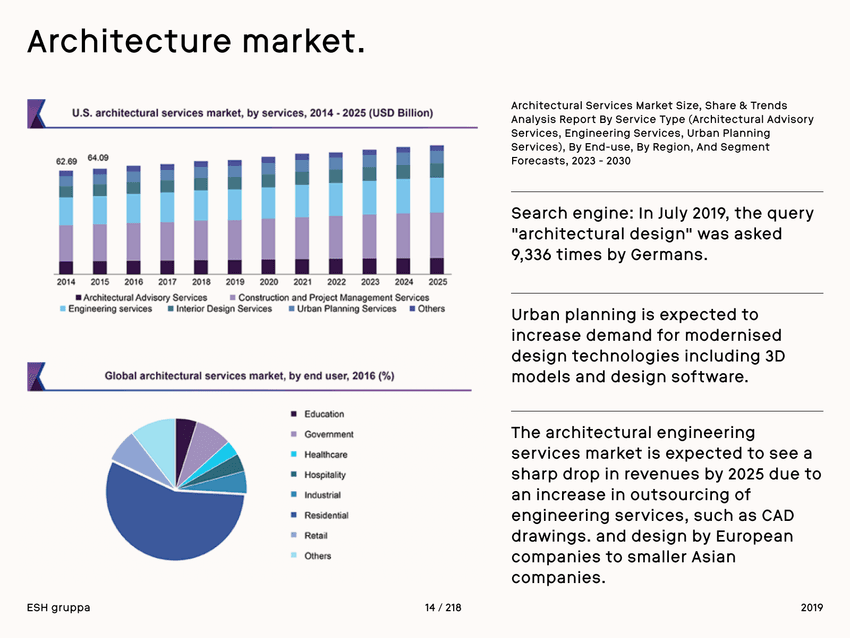
2. Competitor Analysis
Every research project includes competitor analysis. By examining your competitors, you gain valuable insights into their strengths and weaknesses. Understanding these can help you identify gaps in the market and opportunities for your own brand to shine.
Our team normally goes beyond just assessing the visual representation — we dive deep into rival brands’ communication strategies, analyze their tools and methods of promotion, identify their values, and and examine how they structure their brand platform.
We often look for examples of effective communication and analyze the tools used. However, In the Feerique study, we highlighted formulaic techniques that wedding agencies use so we could specifically counter them. As a result, the Feerique brand has become the industry leader in high-end wedding event management. By defying convention in their brand communication, they rose to the top of the list among couples looking to make their wedding celebration truly unique.
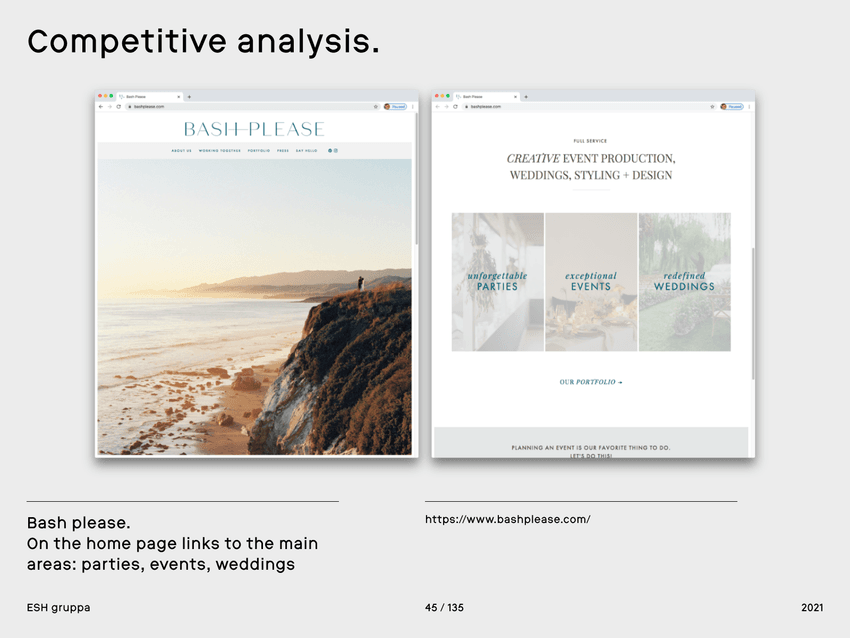
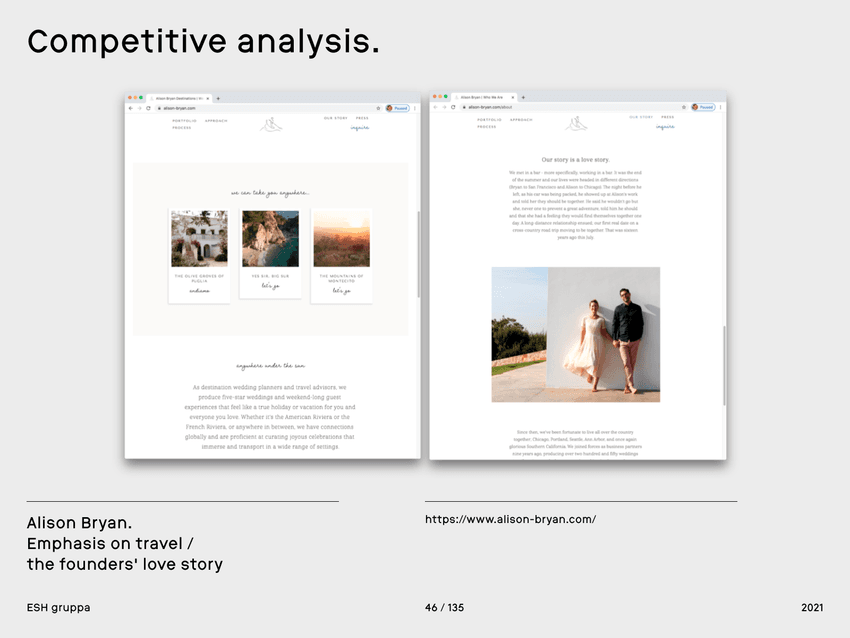
3. Visual Study
Visual research is a comprehensive investigation of how brand communication operates in a particular segment, what strategies are used for it, and what the semantic landscape looks like for the future brand. With the end goal of coming up with terms of reference for designing a brand identity, this section usually is the most extensive.
The core of our work here is understanding the conventions in branding — e.g. design trends, font choices, logos, themes. We evaluate the competitors, exploring their approach to style, the meanings they assign to their identities, and the elements they incorporate into their media. This data helps us to decide whether the brand will adhere to existing patterns or venture away from them.
When working with an existing brand identity, we also assess the strong points and vulnerabilities in the current communication to plan a strategic transition to their new identity.
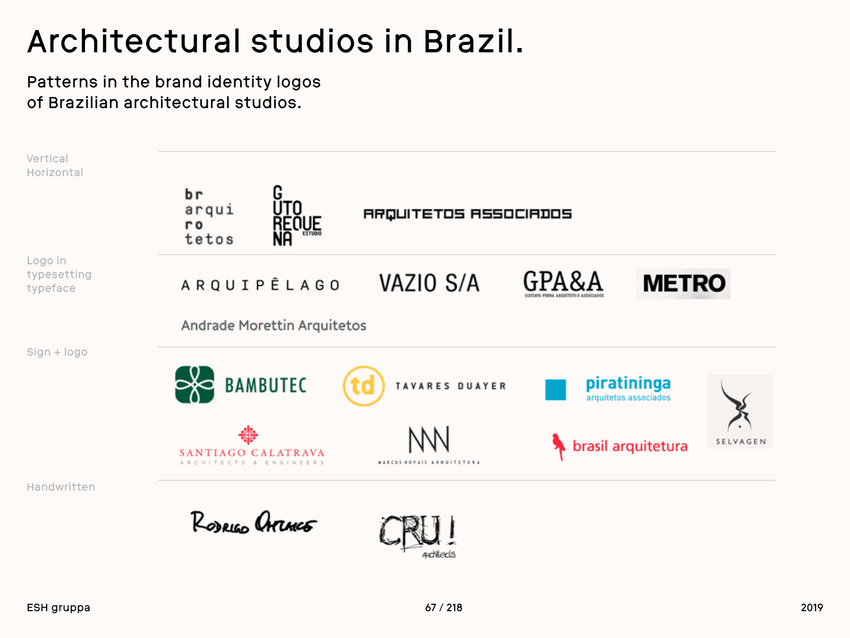
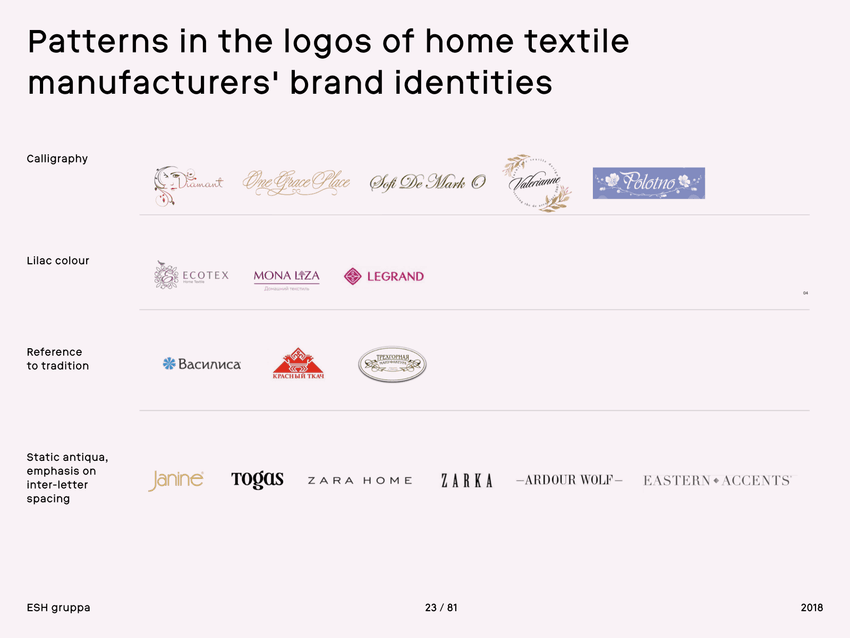
4. Conclusions
The most important part of a pre-project study for brand identity development is a series of conclusions: these are critical insights, facts, and questions that are important to address before you begin designing. They provide a detailed orientation for brand development strategy, launch, and positioning. We take those insights and use them as the basis for brand design.
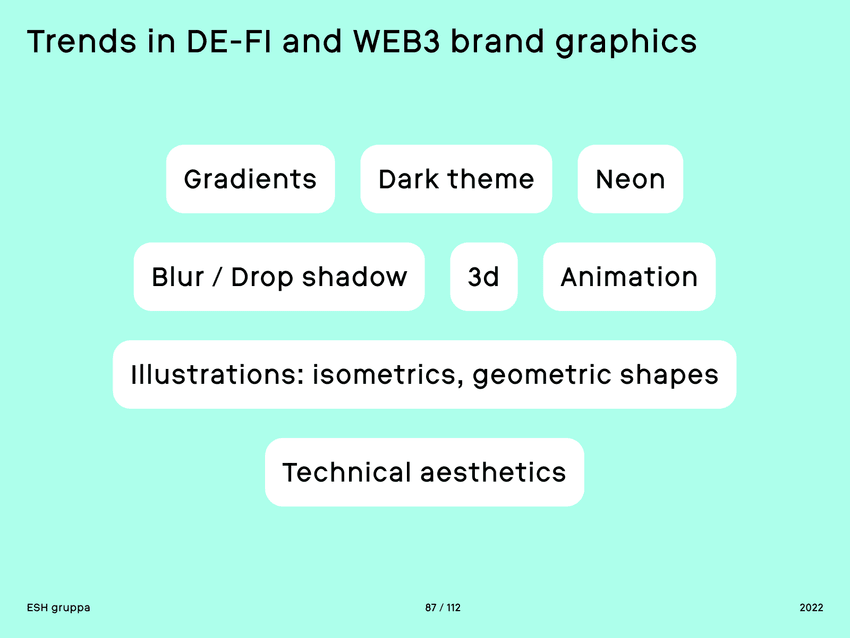
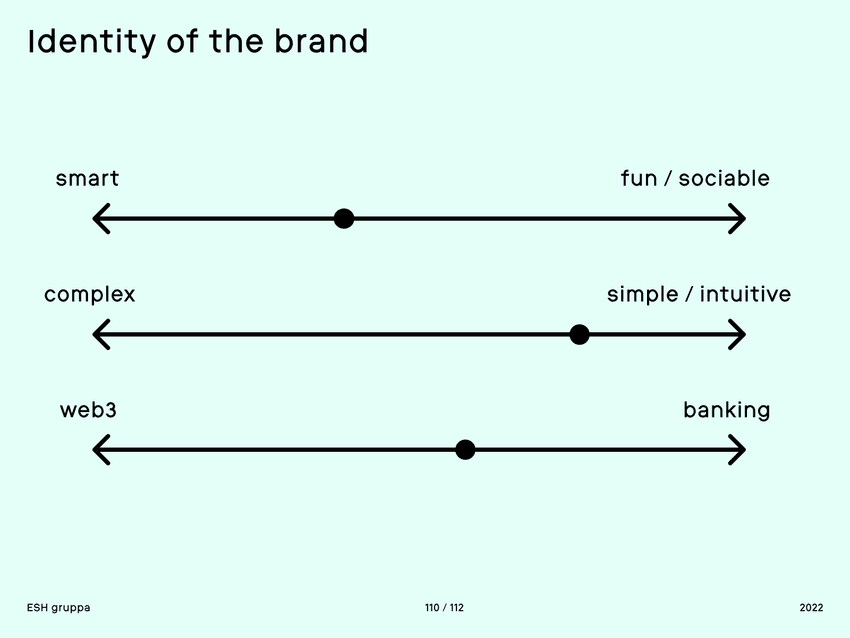
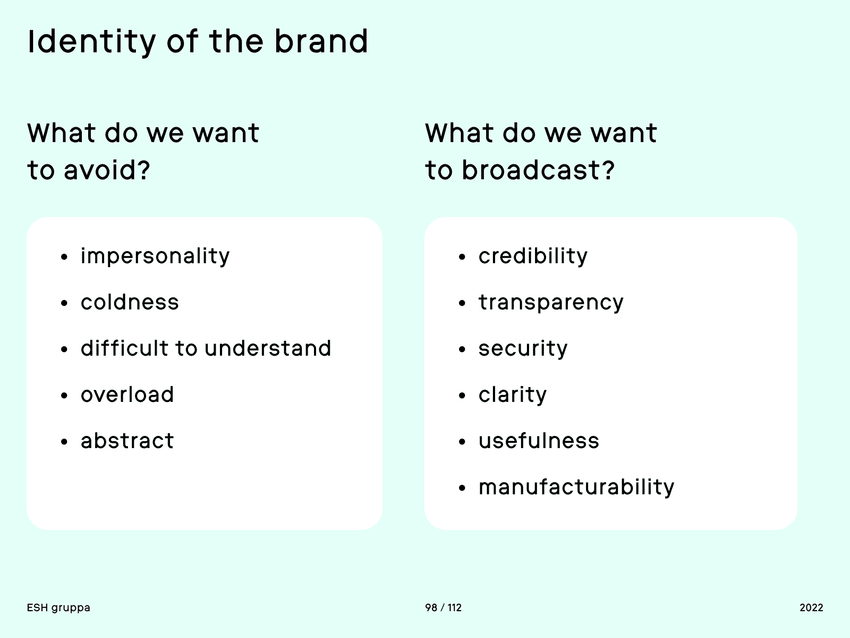
What happens after the pre-project study?
After the study is completed, there is typically a general meeting to go over the results and the questions that come up. Sometimes the client can tackle those on their own, but if not, we work together and organize a workshop with their team to iron out any discrepancies and make sure we’re all aligned on goals and values.
So, what’s the point of all this?
Simple: a pre-project study provides clients with clarity and crucial insights into the options and allows them to take the next steps with confidence and precision.
So remember to take your time in this process and don’t rush straight into designing your identity without a strong foundation. And if you need assistance collecting data and turning it into something meaningful, get in touch with us to see how we can help.


